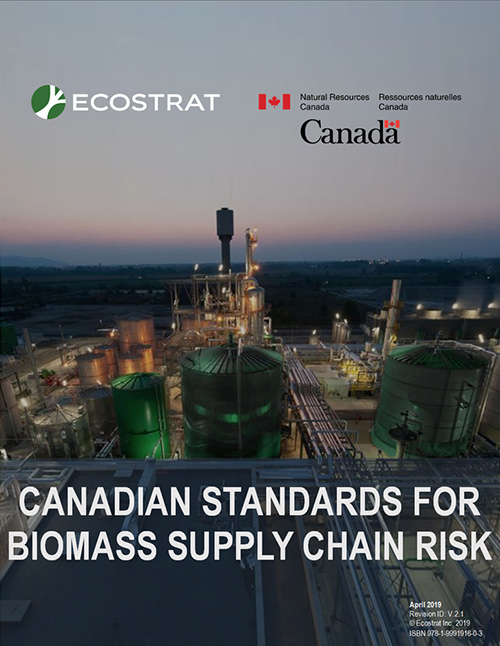By David Dodge and Kay Rollans
There are an estimated 120 million tonnes of waste and residue biomass in Canada right now — waste that could form the cornerstone of a green COVID-19 recovery effort that fights climate change by building the sustainable economy we need.
So says Jordan Soloman, President of Ecostrat, a Canadian company that sources and supplies biomass and helps businesses understand the potential of this “waste” as a valuable resource.
“Biomass is technically anything that was once alive and now could be utilized to form or create a biochemical or a biodiesel or a biofuel,” Solomon says.
For many, the word “biomass” calls to mind trees, plants, and possibly animal products. In the context of the biomass industry, however, the term is often used much more broadly. For companies like Ecostrat in particular, the focus in not on the virgin resources themselves, but on organic wastes from other industries that use those resources.
In other words, “[we’re] not talking about the tree itself, but … about what’s left in the forest when one harvests the trees: the branches bark, the tops,” says Solomon.
This biomass waste includes everything from bark and saw dust from pulp and lumber mills to residue or straw left over in the fields once a crop is harvested to animal manure to the mixed bag of organic wastes that, unless diverted, end up in our landfills and garbage streams.
And all of these wastes add up to an untapped and exceedingly diverse resource that could be used to make renewable natural gas that can fuel trucks, school buses, and even planes.
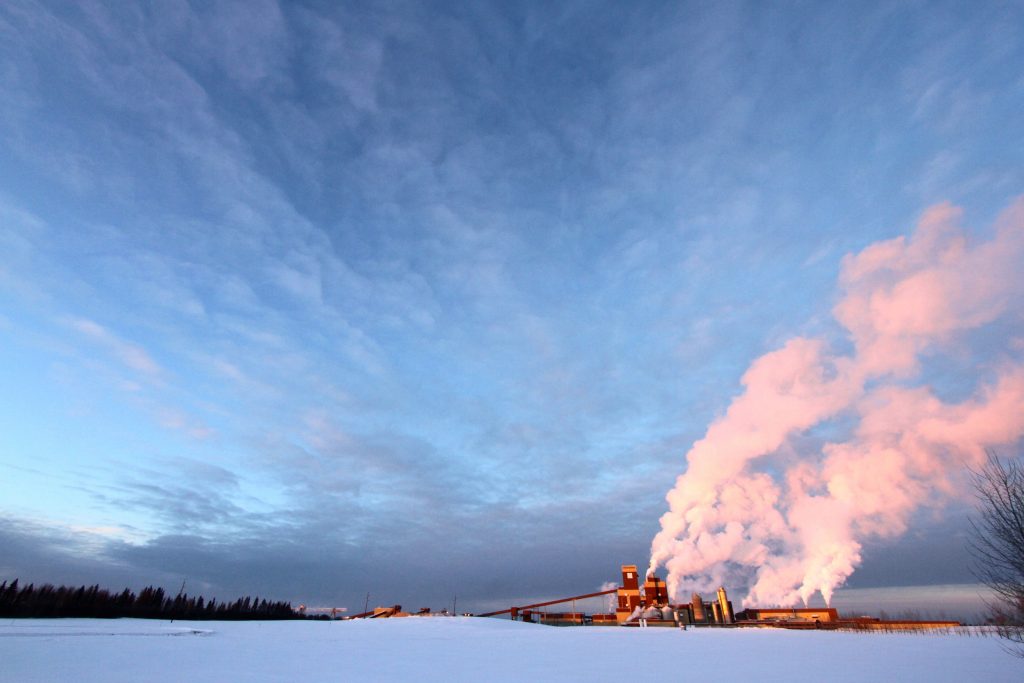
132,000 Canadian jobs
Around the world, biomass is already big business. Neste, the Finnish national energy company, produces 3.4 trillion liters of renewable fuels each year, 80 per cent of which comes from waste and residues. Meanwhile, Germany has 7,600 biomass energy systems running around the country.
There have been a number of small biomass fuel projects in Canada, as well. For instance, the Alberta Pacific Forest Industries (Al-Pac) pulp mill—the largest single-line kraft pulp mill in North America—runs a 40-megawatt power plant using only waste wood and bark as fuel.
There have even been demonstration biomass district heating projects in places like Sherwood Park, Alberta. The project was built by Lambion Energy Solutions from Germany, a company that has already built 3,400 similar projects, mostly in Europe.
These projects show that biomass fuel generation can be successful in Canada, as well. But Canada’s waste biomass resources — the products of an economy heavily dependent on natural resources — remain sorely underutilized.
Ecostrat estimates that the approximately 120 million tonnes of biomass currently lost as waste could instead by turned into 132,000 jobs and $31 billion in economic activity.
Why is Canada missing this opportunity?
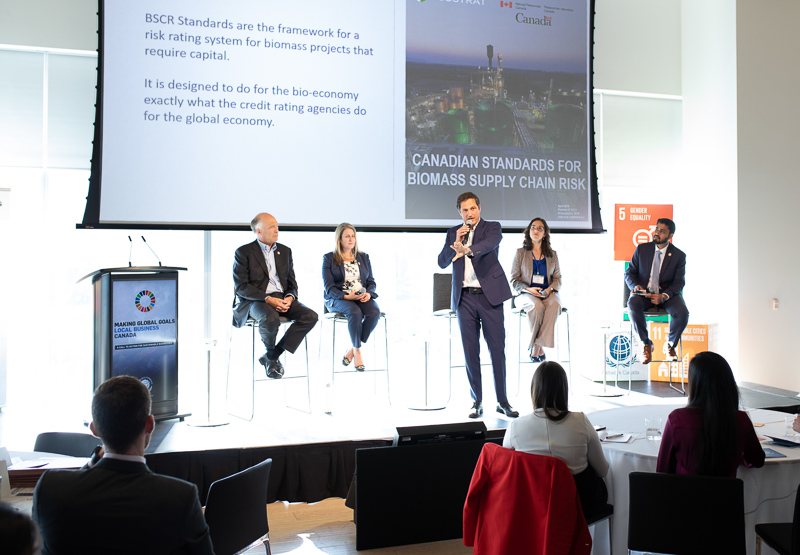
Risky feedstock business
One key reason biomass is underutilized in Canada is risk. “It’s because the investors, the capital markets that invest into companies that produce biofuels, biochemicals, and bioproducts from biomass don’t have or haven’t until now had … an accurate way to quantify the risk of the feedstock,” says Solomon.
With more than 20 years of experience supplying hundreds of thousands of tons of biomass to companies that use it, Ecostrat understands these risks intimately. “When you’re delivering that biomass, when you’re the supplier, you have to wear that risk. And when you have to wear that risk. You learn very quickly the ways to mitigate that risk,” says Solomon.
Risks such as corporate insolvencies, weather risk, forest fires, diesel cost, housing starts, and hundreds of other risks make investors wary.
The Sherwood Park biomass district heating system is a case in point. The demonstration project was counting on a local supply of waste wood to power the system. As it turned out, their supply was not reliable, and the project had to fall back on natural gas boilers, which are now often used instead when biomass is unavailable.

These risks can, of course, be overcome. A few years back, we shared the story of the Greenest little campus in Canada: Nova Scotia’s Université Sainte-Anne, which uses a biomass system to heat their campus. Like the Sherwood Park project, the Université Sainte-Anne struggled with the security of their biomass supply. By working with local famers, however, the university set up their own biomass supplier, mitigating their risk.
But there’s a lot of risk and a lot of uncertainty involved in being among the first to navigate these risks. The uncertainty of this work holds back some investors and puts financial institutions on edge when it comes to the biomass industry.
Solomon’s company has tackled this risk-transparency issue head on. Fifteen years ago, Ecostrat spun off an advisory firm that focuses on helping companies understand biomass supply chain and feedstock risks. Last year, this firm led a federally funded effort to create Canadian national standards for measuring these risks, and risk-level certifications to guide industry development.
These standards and certifications are, Solomon says, a “huge step forward” in helping investors overcome their uncertainties and help the biomass industry flourish.
The biomass supply chain standards now classify 126 key risks facing biomass projects including supplier, competitor, supply chain, feedstock quality, feedstock scale-up risk, and internal organizational risk.
Bioeconomy Development Zones — bringing the biomass
With standards coming, Ecostrat is working on the development of Bioeconomy Development Zones to focus attention on secure supplies of biomass and to create centers of biomass development.
“It’s basically in response to the devastation wrought upon the world economy by the coronavirus pandemic,” says Solomon.
It’s also part of the answer of bringing market credibility to the biomass industry.
“This program has the means of harnessing that 100 million tonnes of biomass and putting it together with our biomass supply chain risk standards, to designate zones that are low risk and can attract new bioeconomy development — new plants that could employ people and that can produce new economy products like biofuels, biochemicals, and bioenergy,” says Solomon.
Solomon says these zones will be based on three pillars: 1) a surplus of biomass; 2) good, strong anchor suppliers; and 3) good infrastructure.
“It’s basically a program to make the phones ring and brings bioeconomy development to the country for the services of job creation, energy independence, and to consolidate Canada as a leader in new energy production.”
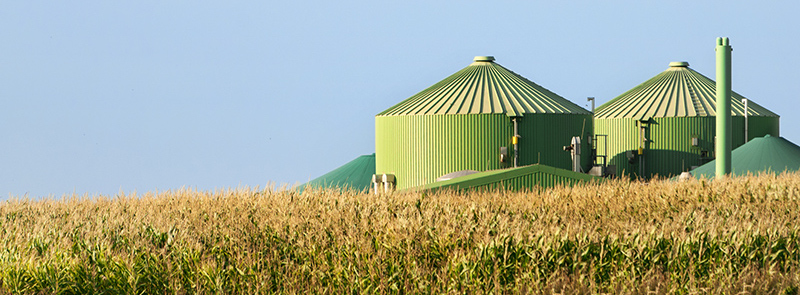
The Melville Bioeconomy Development Zone
The first Bioeconomy Development (BD) Zone is being set up in Melville, Saskatchewan.
“Melville is an ideal site to be a BD zone,” says Solomon. The City has good infrastructure, abundant biomass and good anchor suppliers.
“If you look 400 kilometers in any direction, all you see is wheat. It’s in the middle of the wheat belt … there is almost a million tons of wheat straw around the city of Melville, within about a 60-kilometer radius,” says Solomon.
The City of Melville is working with Ecostrat and Red Leaf Pulp — a company that makes pulp and paper out of wheat straw—to set up a bioeconomy plant in their in their zone and secure some much-needed job creation. Six similar biomass pulp plants are already operating in the United States, but this would be the first of its kind in Canada.
The BD zone designation will be important to sealing the deal, ensuring Red Leaf Pulp that they will be setting up shop in a low-risk area with abundant biomass supply. While the Red Leaf plant would not be a biomass energy project, it does offset biomass waste and could be the spark that ignites further development in all areas of the biomass industry in Canada.
“We will track what type of economic development that spurs in that first-of-kind BD zone. And if we can show that it’s effective, I think what you’ll see is this [BD zone] program roll out very quickly across Saskatchewan and then very quickly nationally,” Solomon says.
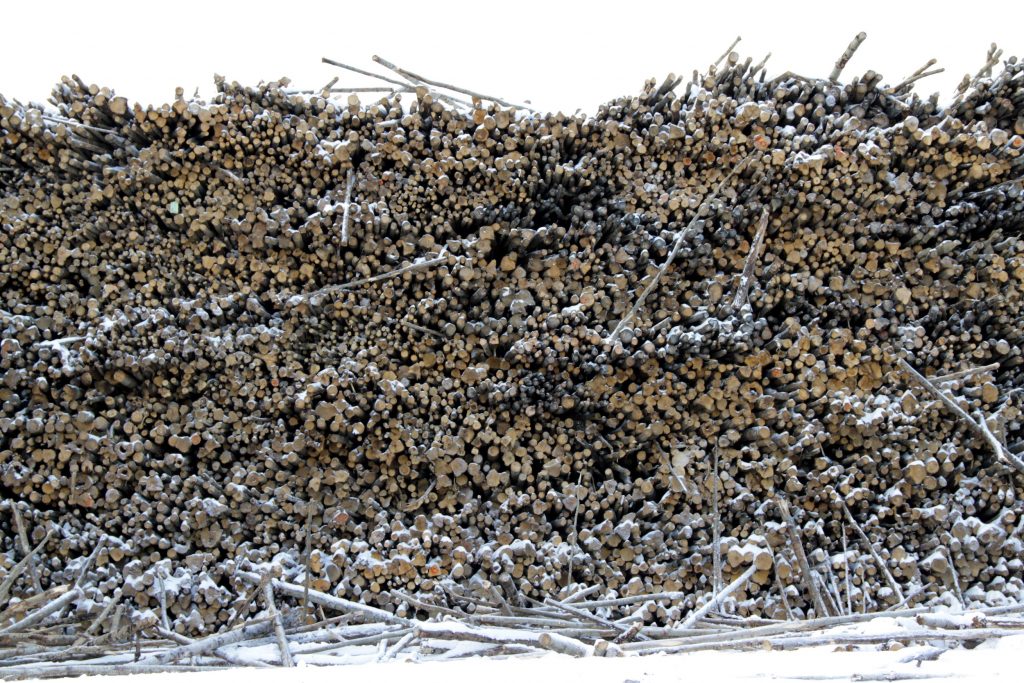
The good, the bad and the ugly of Biomass
Opinions differ when it comes to the question of how “good” biomass industries and technologies are for the environment, and some of this difference is owed to the diversity of the resources itself, and of the ways in which it can be used.
The Renewable Resources Coalition has their list of pros and cons of using biomass. Clean Energy BC has a good summary on biomass at their website. And the Energy Justice Network has complied a long list of only cons of using biomass.
Critics argue that burning biomass waste—a common way of harnessing this resource as a fuel for biomass-specific systems of, sometimes, as a substitute fuel in traditionally coal-fired power plants—may do little to ease pollution. They note that, beyond the pollution problems that come with all kinds of incineration, waste incineration risks releasing dangerous contaminants into atmosphere. Important questions must be asked about whether our current pollution controls are adequate for regulating biomass energy generation, and whether this is a good use of biomass at all.
Regardless of how industry is using biomass, scrutiny is also warranted over where and how biomass is being sourced. Arguably, harvesting virgin timber or growing crops only to burn or to toss in an anaerobic digestor to harvest methane is a poor use of these resources.
In this regard, at least, creating industries around the use of “waste” biomass is more often seen as a good, or at least better, use of biomass resources. As long as there are industries creating this waste, we might as well make use of its potential, instead of leaving it to anaerobically decompose in landfills, releasing CO2 and methane into the atmosphere.
This, at any rate, is Ecostrat’s perspective. Solomon adds that it is important for the industries that create these wastes to use sustainable practices, as well.
“What we’re talking about is with proper, sustainable use of forestry and agriculture, leaving enough on the fields to retill into the soil so you don’t have carbon loss in the soil, leaving enough in the forest so you don’t have soil erosion in the forest along with sustainable cutting practices,” he says.
While there are downsides to using biomass as an alternative energy resource, standards, certifications, and scrutiny could definitely help us mitigate the environmental risks of biomass use.
Ecostrat’s newly developed standards for the biomass industry are geared towards separating the wheat from the chaff in the biomass world (and in this case, they’re after the chaff). Combined with the new Bioeconomy Development Zone program, Ecostrat is confident that Canada is on the road to developing a sustainable bioeconomy.
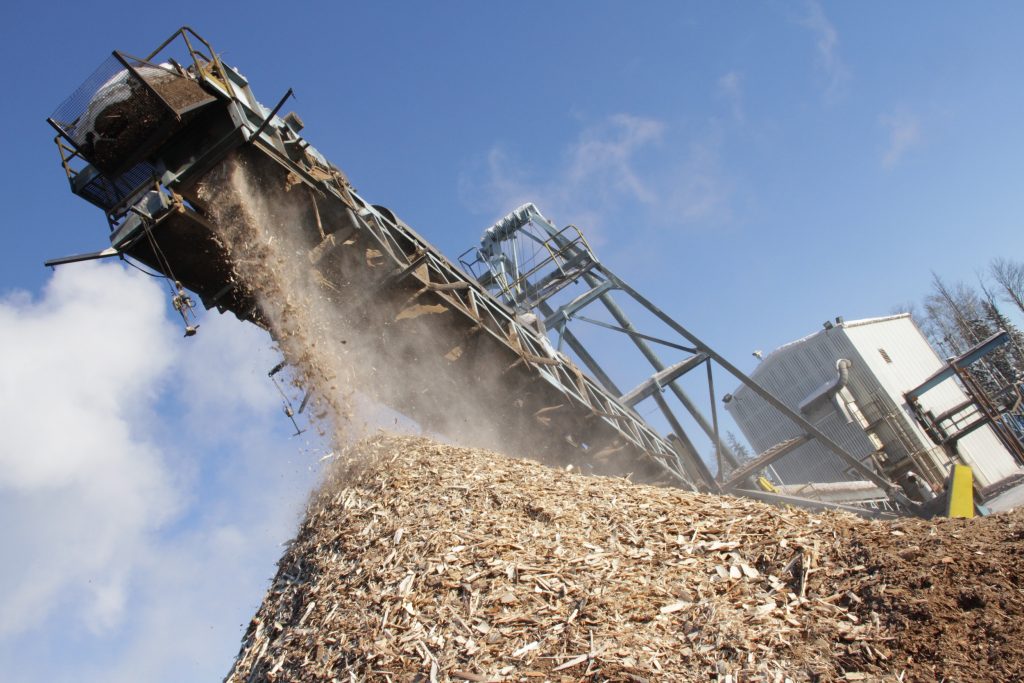
Biomass energy recap
We’ve looked at a number of biomass-related projects at Green Energy Futures. Below is a list of past stories that deal with biomass energy production and biogas. We include biogas stories here since biogas is produced from biomass, and more often than not from waste biomass.
Biomass energy production
The largest single-line kraft pulp mill in North America uses waste biomass to produce 40 megawatts of electricity;
97. Ban the beehive: Why wood waste to energy is a no-brainer
Whitecourt, Alberta has a pulp mill and a sawmill. With all that wood comes wood waste. One company is turning this wood waste into something useful: green electricity.
46. Biomass district heating in Sherwood Park
In Sherwood Park, Alberta, just minutes from refinery row, biomass is used to heat city hall, the famous Festival Place Theatre, condos, a high school, and more — at least until they ran into supply issues.
32. UBC district heating: Low carbon Lego
The Bioenergy Research and Demonstration Facility burns locally sourced wood waste and tree trimmings and provides 25 per cent of UBC’s baseload heating needs.
Biogas
31. Biogas: Closing the loop on cow poop
Cow poop isn’t typically thought of as a valuable resource but, through a process called anaerobic digestion, that cow poop can be turned into electricity, heat, a near odourless fertilizer, and animal bedding.
134. Biogas: Brown waste – green power!
Lethbridge Biogas takes manure and food waste, mixes it together, heats it to 39 degrees Celsius, and captures methane to power twin 1.4-megawatt generators, producing enough power for 3,000 homes.
33. Landfill gas: How old garbage can generate electricity
Landfills are quickly becoming centres of innovation when it comes to turning what we throw away into energy. Edmonton has had a landfill gas operation since 1992 and it was the first in Western Canada to turn old garbage into electricity.
39. Nanaimo: Turning waste into compost, carbon credits, and electricity
The Nanaimo Regional District is home to about 145,000 people on the east coast of Vancouver Island. This west-coast municipality is turning its trash into compost, clean energy, and carbon credits.

